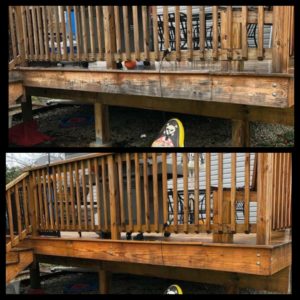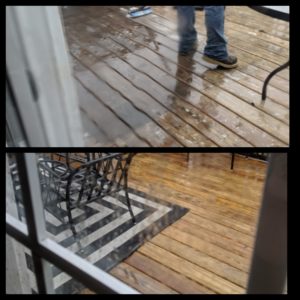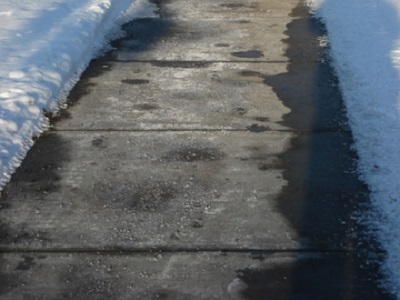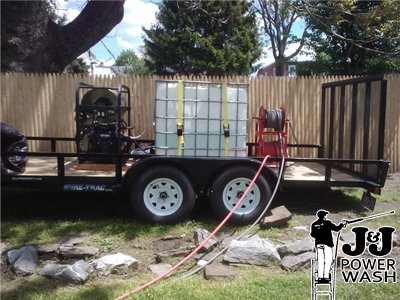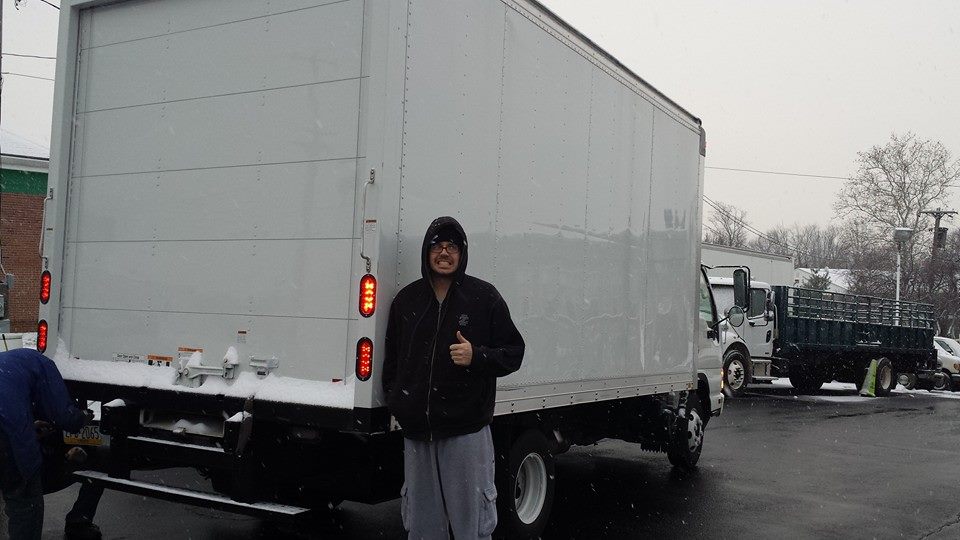While a snow covered roof with hanging icicles can be a thing of beauty, a leaky roof and damaged gutters are not. If damage to your home or business isn’t a good enough deterrent, icicles kill roughly 15 people in the United States each year, according to the Death in Society Research Foundation.
Icicles are nothing more than the result of buildup of ice on your roof and in your gutters. Without going into too much detail ice dams are formed when part of the roof is warm enough to melt snow, which trickles down to parts of the roof are cold enough to freeze the runoff water. You will see this frequently if your home as an overhang or eave that extends further than your siding.
So why is this bad? Well, when water freezes on your eaves it can start freezing water higher and higher up on your roof line. If the water freezes under your shingles it can damage your roof, sheathing and in some cases your attic. A simple prevention is sweeping the built-up snow off of your roof. Unfortunately, you would have to do this every time is snows and if your roof is high who wants to deal with ladders in the freezing cold? And surely you do not want to call a ice dam removal contractor every time it snows.
Temporary Ice Dam Solutions
One solution that is only temporary is to install heat tape along the the surface of your roof in a wavy pattern. This will melt the snow and allow the water to run off. The problem is this fix is only temporary. You may read that axes and chisels work but again this is only a temporary fix and you may end up damaging the material under the ice.
The best way to prevent ice dams is to keep the attic cold in the first place. This way no heat being lost from your home to your attic can melt the snow on your roof. Insulation like spray foam is probably your best bet. But again if your house allows heat to get to your attic it may not work properly.
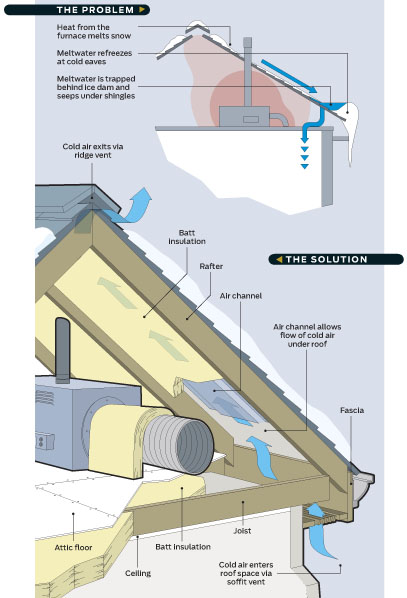
Logically, you would think that you would want to keep your attic warm so snow and ice melts instantly but this is not the case. Proper airflow from the aforementioned eaves up through the attic is a sure fire way to prevent ice dam formation. Adding a fan in an attic window can go a long way.
Permanent Ice Dam Prevention Steps
- Ventilate your eaves and ridge with continuous soffit vents
- Cap or seal your attic hatch or entrance
- Make sure any ducts that connect to the kitchen or bathroom are exiting outside
- Add insulation like spray foam
- Install sealed can lights if you have recessed lighting between the attic and floor below
- Add flashing and/or caulk around your chimney and ducts
- Add caulk around any cables that run into the roof or attic

